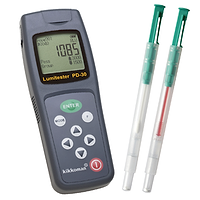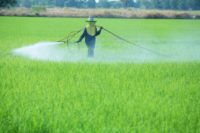Cleaning and Disinfection: Improving Food Safety and Operational Efficiency in Food Processing

Cleaning in the food industry is not an easy task. However, it is a critical step within food production since it is crucial to maintain and guarantee food safety. Understanding various soil challenges, why we clean and how detergents and disinfectants work is key to ensuring a safe, hygienic manufacturing environment.
So the big question remains: Why do we clean and disinfect?
- Prevent Transfer of Products/Ingredients––If a number of products are manufactured on the same machine, it is undesirable to cross-contaminate chemicals or alternate from one product to the next.
- Avoid Microbial Contamination––This can lead to a number of problems––reduced product quality, harm to health or even life threatening circumstances in some cases. Cleaning alone is no guarantee of decontamination, but it is a pre-requisite to disinfection.
- Ensure Disinfectant Efficiency––Soil impacts the effectiveness of a disinfectant. The less soil on the surface, the more effective the disinfect will be at reducing microbiological contamination.
- Improve Plant Efficiency––Soil contamination reduces the efficiency of equipment and the production process.
- Increase Safety––Facilities that are not cleaned effectively have more potential safety risks—like slips and falls––due to food waste on floors. Also, major incidents due to build up of soil in equipment can also occur.
- Impact Financial Implications––Reducing waste from spoilage can significantly extend the life of equipment and machinery.
- Minimize Legal Ramifications––Although it may not be common knowledge, there are often legal requirements for food facilities to clean surfaces and equipment to a specific standard.
- Boost Stakeholder Confidence––Finally the appearance of plant and premises is often overlooked but the psychological benefits and confidence gained from clean, hygienic equipment and tidy surroundings have a significant impact on both worker satisfaction and customer confidence.
Cleaning
Cleaning and disinfection should be considered as two discrete steps in the cleaning procedure. Cleaning is the complete removal of residues and soil from surfaces, leaving them visually clean so that subsequent disinfection will be effective. Without effective cleaning, disinfection will be compromised.
 Detergents are used to remove soil from a surface. The soil––a mixture of food waste and bacteria––is on or attached to the surface of the processing equipment, floors or walls. The action of the detergent solution is to suspend this soil and bacteria mixture away from the surface and allow for it to be rinsed off to the drain. However, there are many soils found in the food industry and the cleaning procedure and detergent used in order to achieve the desired detergent action is different for each soil.
Detergents are used to remove soil from a surface. The soil––a mixture of food waste and bacteria––is on or attached to the surface of the processing equipment, floors or walls. The action of the detergent solution is to suspend this soil and bacteria mixture away from the surface and allow for it to be rinsed off to the drain. However, there are many soils found in the food industry and the cleaning procedure and detergent used in order to achieve the desired detergent action is different for each soil.
The most common soils—carbohydrates like sugar, starch and cellulose––are the easiest to remove. Proteins––meat, milk and eggs––are probably the most difficult because changes in heat and pH alter the structure of the protein and bind it to other molecules, increasing their tenacity and often rendering them insoluble. For example, while milk is soluble in water, if you over boil a pan of milk, the resulting milk soil becomes difficult to remove form the pan.
Fatty soils are not water-soluble and pose a greater challenge than carbohydrates. Here, it’s necessary to use alkaline cleaners and elevated temperatures above the melting point of the fat to achieve an efficient clean. Mineral salts––the inorganic food soils––lead to scale formation on equipment. Acidic cleaners are required to efficiently remove the scale.
There are four variables within the cleaning process that can impact its efficiency to remove soil:
- Detergent/Concentration
- Time
- Temperature
- Physical Action
Devised in 1959 by Dr. Herbert Sinner, Sinner’s Circle is universally known as the model to demonstrate that reducing one of the four factors can be compensated by increasing another. For example, you may be able to increase the temperature to enable you to use a lower concentration of chemical.
Disinfection
Disinfection is the process by which microorganisms are killed so that their numbers are reduced to a level which is neither harmful to health nor to the quality of perishable goods. Following cleaning, surfaces will be free from soil but microorganisms remain. Using validated disinfectants on surfaces, following the instructions and contact times, reduces microorganism levels to the required level for food production.
 The method by which disinfectants kill the microorganism––referred to as their “mode of action”––varies with the active ingredient. The table on the right shows some of the key activities[ed1] and their mode.
The method by which disinfectants kill the microorganism––referred to as their “mode of action”––varies with the active ingredient. The table on the right shows some of the key activities[ed1] and their mode.
When selecting a disinfectant, a number of considerations need to be made.
Application, including the compatibility with materials found in the area being disinfected
Temperature required
Impact of water hardness
Required concentration
Toxicity
Leftover residues
Above all, the approvals each disinfectant has should be taken into account during selection, for example if you are using a product in a chilled environment, the disinfectant should be proven to work at the temperature you are intending to apply it at.
Cleaning Validation
The validation of cleaning and assuring standard, consistent results has become a topic of high priority in the food processing industry. This validation is used to show proof that the cleaning system consistently will perform as expected. A surface is chemically clean if there are no microscopic residues of soil remaining and no residual detergents or disinfectant chemicals to contaminate the food product. Determination of chemical cleanliness requires tools other than the human eye. Techniques for determining such small amounts of soil include:
- Visual moisture on surfaces––Soiled surfaces become hydrophobic, so water will bead up and show the presence of soil.
- Dyes––Specific dyes with an affinity for certain soils like protein or starch can also be applied to a surface to make the soil visible.
- Optical methods—These are used quite regularly in some food processing operations for detecting soils. Interruption of a light beam, reflectance and absorbance are all optical means of detecting soil.
- Adenosine triphosphate (ATP)––ATP levels are present in all organic material. Measuring its presence is a very effective way of providing immediate feedback to ascertain the cleanliness of critical control areas.
The basic principles discussed here should provide insight into the variables that should be taken into account when devising a cleaning schedule. Controlling these variables will present opportunities to deliver real improvements in operational efficiency in food processing, while improving overall food safety.
Visit Diversey.com for more information.
Looking for a reprint of this article?
From high-res PDFs to custom plaques, order your copy today!





